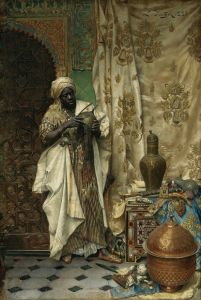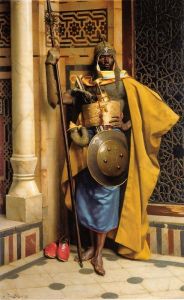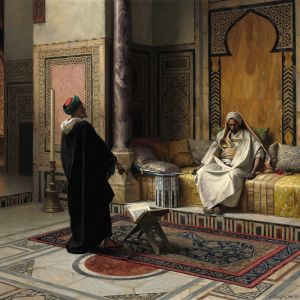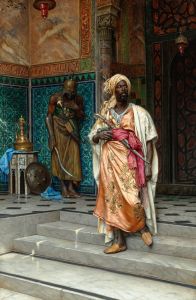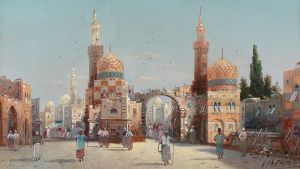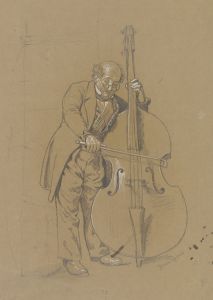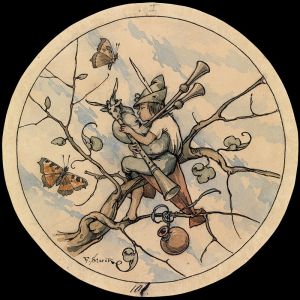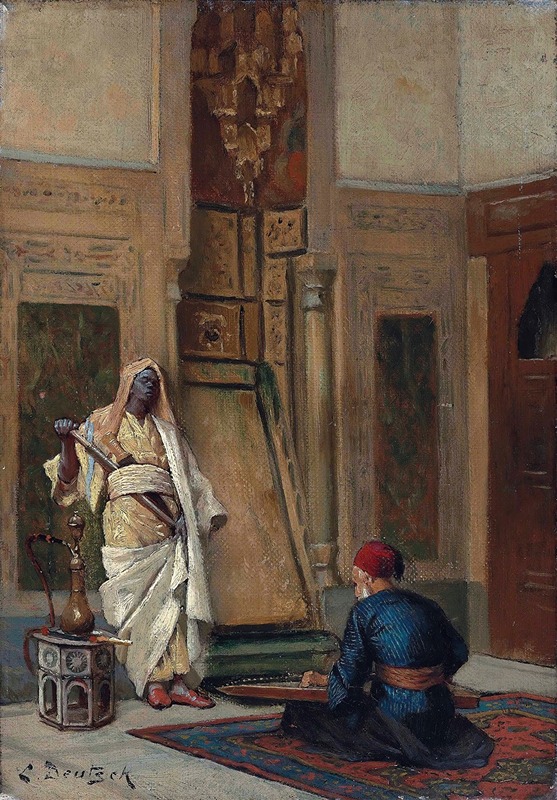
A musician and a guardsman in an oriental interior
A hand-painted replica of Ludwig Deutsch’s masterpiece A musician and a guardsman in an oriental interior, meticulously crafted by professional artists to capture the true essence of the original. Each piece is created with museum-quality canvas and rare mineral pigments, carefully painted by experienced artists with delicate brushstrokes and rich, layered colors to perfectly recreate the texture of the original artwork. Unlike machine-printed reproductions, this hand-painted version brings the painting to life, infused with the artist’s emotions and skill in every stroke. Whether for personal collection or home decoration, it instantly elevates the artistic atmosphere of any space.
Ludwig Deutsch was an Austrian painter born in 1855, renowned for his Orientalist works. His painting "A Musician and a Guardsman in an Oriental Interior" is a notable example of his meticulous attention to detail and his fascination with the cultures of the Middle East and North Africa. Deutsch was part of a broader movement of European artists in the 19th century who were captivated by the Orient, a term used at the time to describe the regions of the Middle East, North Africa, and parts of Asia.
Deutsch studied at the Academy of Fine Arts in Vienna and later moved to Paris, where he became influenced by the Orientalist movement. He traveled to Egypt in the late 19th century, which profoundly impacted his work. His paintings are characterized by their precise detail, vibrant colors, and the romanticized portrayal of Eastern subjects and settings.
"A Musician and a Guardsman in an Oriental Interior" exemplifies Deutsch's style and thematic interests. The painting depicts an opulent interior, likely inspired by the artist's travels and studies of Islamic architecture and design. The setting is richly decorated, featuring intricate patterns and luxurious textiles, which were common elements in Deutsch's work to convey the exoticism and splendor of the Orient as perceived by Western audiences of the time.
In the painting, a musician is shown playing an instrument, possibly a lute or oud, which is a traditional stringed instrument commonly found in Middle Eastern music. The musician's attire is elaborate, reflecting the artist's attention to the authenticity of costumes and cultural details. Beside the musician stands a guardsman, dressed in a uniform that suggests a position of authority or protection. The guardsman's presence adds a narrative element to the scene, hinting at the social or cultural dynamics within the depicted interior.
Deutsch's work is often praised for its technical skill and the way it captures the light and texture of the materials he portrays. However, like many Orientalist works, it also reflects the Western fascination with and often stereotypical views of Eastern cultures during the 19th century. Orientalism as an art movement has been critiqued for its tendency to romanticize and exoticize the East, often ignoring the complexities and realities of the cultures it depicted.
Despite these critiques, Deutsch's paintings remain valuable for their artistic merit and as historical documents that offer insight into the Western perceptions of the Orient during his time. His works are held in various collections and continue to be studied for their contribution to the Orientalist genre and their reflection of 19th-century European art and culture.
Ludwig Deutsch passed away in 1935, but his legacy endures through his detailed and evocative paintings, which continue to captivate audiences with their beauty and historical significance.






